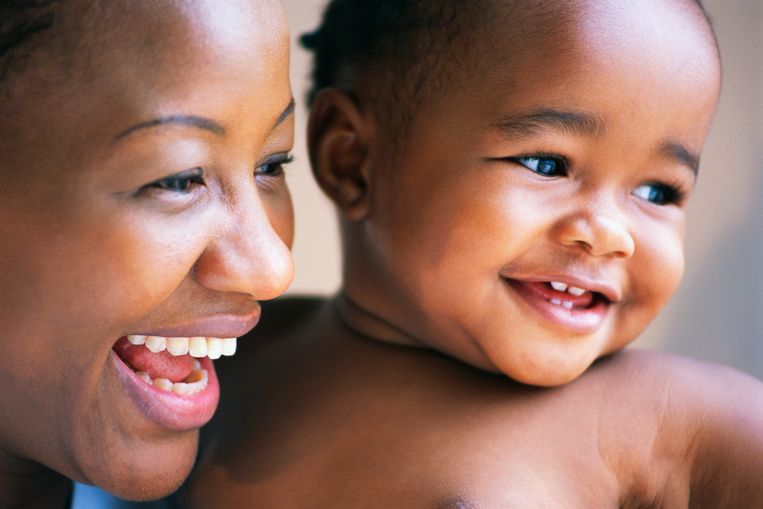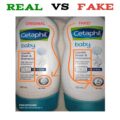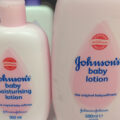Newborn skin is delicate — and so is the baby’s immune system. While there are several normal newborn rashes, chemicals, fragrances, and dyes in clothing, detergents, and baby products can cause newborn skin irritation, dryness, chafing, and rashes.
Pediatric dermatologists know that the younger a child is, the more sensitive their skin tends to be. It’s our duty to inform parents that their child’s skin is typically more susceptible to irritants than adults’ skin, and it’s not uncommon for kids to develop skin irritations or allergies to common synthetic ingredients.
Therefore, no pediatric skincare routine conversation is complete without a discussion of ingredients to avoid. Though some of the following ingredients have been linked to an increased risk of cancer, we prefer to keep conversations with parents grounded in the potential for irritation and allergies to avoid coming across as alarmist. Here are talking points for educating parents about each hazardous ingredient:
Fragrance. Everyone loves the idea of their baby smelling great, but products with fragrances are often associated with allergies, dermatitis, respiratory problems, and other potentially negative side effects.Plus, a baby’s skin smells good on its own! To avoid any skin complications, ensure the moisturizer they choose is fragrance-free.
Parabens. Parabens are widely used as preservatives in body washes, shampoos, facial cleansers, and deodorants. However, they can cause irritations and allergies in young children, A Research from 2018 suggests that the long-term exposure to parabens throughout a person’s life may affect their metabolism and hormone regulation, so you may want to reduce your child’s exposure early in childhood. so it’s best to avoid these as well.
Formaldehyde. Formaldehyde-releasing preservatives (FRPs) are sometimes used to help prevent bacterial growth, but this chemical can also lead to allergies and irritation and may even be harmful to the immune system. It’s a good idea to avoid any cleansers, body washes, conditioners, or shampoos with this ingredient.
Sodium lauryl sulfate (SLS)/Sodium laureth sulfate (SLES). One estimate reports that more than 90 percent of shampoos and body washes contain sulfates.6 SLSs can irritate the eyes, skin, and lungs, and the ingredient sometimes interacts poorly with other chemical products.
Synthetic Dyes. Often labeled as FD&C or D&C, coloring derived from petroleum or coal tar sources are potential irritants that children can develop allergies to. While The European Union7 has banned it, parents in the United States should be wary, because it can still be found in many beauty (and food) products.
Propylene glycol. Regularly found in moisturizers and sunscreen, propylene glycol is a small, organic alcohol used primarily for skin conditioning. However, it’s been known to cause dermatitis and hives, even in concentrations as low as two percent.8 This is another ingredient to avoid in any over-the-counter search.
Sunscreen Chemicals. Chemicals are commonly found in sunscreen and operate as agents to absorb ultraviolet light, but the consequences are unknown if a large amount is absorbed. Avoid using sunscreens that include chemicals like benzophenone, avobenzone, PABA, homosalate, and methoxycinnamate. Instead, opt for zinc or titanium-based sunscreens.
Of course, adherence to a completely chemical-free product list 100 percent of the time can be extremely challenging. It’s important to remind patients that they should do the best they can to follow these recommendations and remain willing to make changes if their child’s skin exhibits any negative reactions.
A research published in 2020 suggests that some of the ingredients in chemical sunscreens can be absorbed through the skin into the body. While that doesn’t necessarily mean they’re unsafe, parents should be aware of the potential risks until more research is done, since some of these compounds may affect the activity of hormones in the body.
The Baby Bleaching and Lightening Problem In Nigeria and Africa
The bleaching and whitening trend across Africa is taking a dangerous dimension as parents are now searching for best baby cream for fairness and best baby soap for fairness across Nigeria in a bid to tone the skin of their babies.
It is important to note that a bleaching cream may contain a variety of ingredients. Some of these are more dangerous than others. In many areas, unregulated products are sold, often without listing their contents or they are labelled incorrectly. They may be somewhat safe for adults but completely dangerous for babies and children as a result of inherent side effects and toxicity.
People who use skin lightening products containing mercury for example have been found to have elevated mercury levels in their hair, blood, and urine. Mercury can damage the kidneys, affect the nervous system, or cause pain or rashes.
Pregnant women and women of child-bearing age should avoid exposure to mercury. Unborn babies, infants, and children are very sensitive to mercury. Even when pregnant women do not show symptoms of mercury exposure, it can affect their unborn children.
It’s best to use skin care products made specifically for babies, such as fragrance-free and tear-free shampoos, bath gels, and lotions. With each one you use, be watchful of your child’s reaction in case they are allergic.
It’s important to keep your newborn’s skin moisturized, too, so always have a supply of lotions around. Ointments, which have a thicker consistency, are even better at keeping your little one’s skin soft. Avoid perfumed, antibacterial, and deodorant soaps, too—they might be too harsh until your child is a toddler. Baby soaps are best for your little one. ALSO READ Baby Things To Buy Before Child Birth In Nigeria







